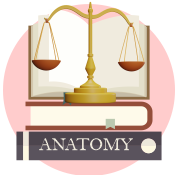The Crucial Tenets: Truthfulness, Accuracy, and Fairness in Scientific Illustration Advertising
In the realm of scientific illustration, where art and information converge, the principles of truthfulness, accuracy, and fairness stand as pillars of integrity. Scientific illustrators have a unique responsibility when engaging in scientific dissemination efforts, as they wield their talents to convey complex concepts and data-driven information. Upholding these principles is not only a moral imperative but also an essential component of maintaining credibility, fostering trust, and advancing both science and art.
Truthfulness
Truthfulness serves as the cornerstone of ethical scientific dissemination in scientific illustration. The images crafted by illustrators are not mere artistic renderings; they are visual representations of scientific knowledge. Whether in print, digital media, or presentations, these illustrations hold the power to shape perceptions, influence decisions, and educate.

Adhering to truthfulness entails accurately depicting the subject matter, avoiding exaggerations, and refraining from misrepresentations. By ensuring that the visuals remain faithful to the scientific data they accompany, illustrators contribute to a genuine understanding of the subject matter.
Accuracy
Accuracy, the second pillar, carries immense weight in the world of scientific illustration. Precision is paramount in portraying proportions, dimensions, colors, and spatial relationships. Inaccurate visuals can lead to misunderstandings, misinterpretations, or even the dissemination of false information.

Scientific illustrators, as purveyors of knowledge, bear the responsibility to diligently research and validate the data underlying their work. Striving for accuracy not only demonstrates respect for the scientific process but also enhances the communicative power of the visuals, enabling viewers to engage with the subject matter more profoundly.
Fairness
Fairness, the final cornerstone, calls for equitable and objective representation in the scientific illustration efforts. Illustrators must make conscious decisions about what aspects to emphasize or exclude, ensuring a balanced portrayal of the scientific concepts.

By presenting a comprehensive and unbiased view, illustrators contribute to the broader understanding of the subject while avoiding the pitfalls of selective or skewed depictions. Fairness also extends to the acknowledgment of collaborators, sources, and references, giving credit where it is due and promoting transparency in the creative process.
Conclusion
Scientific illustrators hold a unique position at the crossroads of art and science, where aesthetics merge with information. In scientific dissemination or even advertising and promotional endeavors, they serve as interpreters and communicators of complex ideas, making the intangible tangible. By adhering to the principles of truthfulness, accuracy, and fairness, the illustrators build bridges between disciplines, enhance scientific literacy, and foster a deep appreciation for the inherent beauty of the natural world.
In a world inundated with information and visuals, maintaining these ethical principles safeguards the integrity of scientific illustration. It bolsters public trust in the accuracy of scientific information, guards against the spread of misinformation, and cultivates a harmonious synergy between art, science, and education. As custodians of knowledge, scientific illustrators contribute not only to captivating aesthetics but also to the advancement of human understanding and the promotion of ethical practices.
